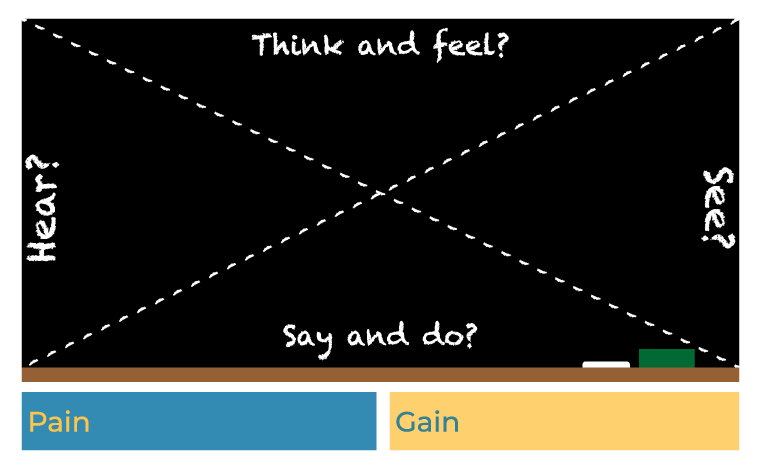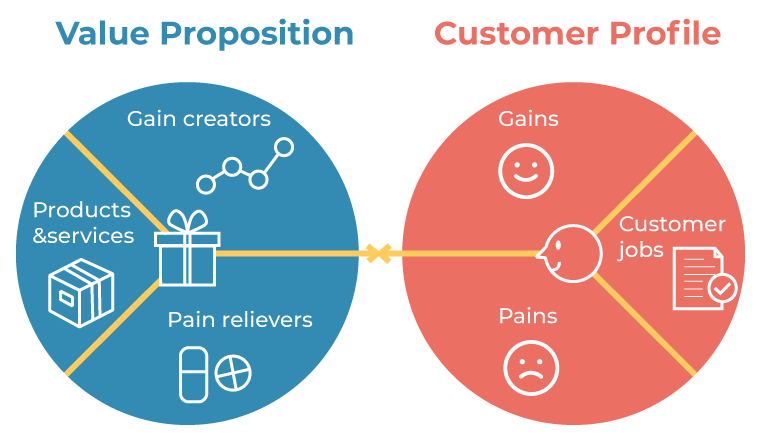How to Build a Counter-narrative?
To build a counter-narrative for your organization, we can adopt the “user experience” methodology.
User experience (UX) design is a user-centered design process to create products that provide meaningful and relevant experiences for users. This process is commonly adopted by startups, software companies, and marketing firms to reach their target audiences and meet the needs of their users.
With the help of social media platforms, disinformation is disseminated to target different groups of people according to their online behaviors, so the counter-narrative messages should also be tailored to the target audience in order to undermine the impact of the disinformation.

Identifying and profiling your target audience
Persona
Persona is a method for describing the target audience in marketing or business.
Express your sincere thanks to the other person for being willing to spend time discussing an issue that you both care about, and allow the conversation to end on a happy and comfortable note.
The difference between persona analysis and general academic research is that instead of focusing on demographic data such as age, socioeconomic status, and academic qualifications, persona analysis focuses more on "details describing the background, personality, and preferences of individual customers.
Through persona analysis, we can better imagine users (in this case, consumers of disinformation), understand the reason why they believe the disinformation, and assess the values and experiences that support this belief.
To build an appropriate persona, you could conduct field observations, interviews, surveys or other research to find out the key motivations that drive your users, and incorporate the following questions to build the persona.
Who are your users / consumers?
Set demographic info, such as age, location, occupation, educational background etc… Describe the background of this user / consumer
- What is their main goal?
- What are they looking for?
- What is the user/consumer motivated by?
- What are their needs?
- What is the main barrier to their achieving this goal?
- What is the “pain point” for this user/consumer?
- What frustrates them?

Empathy map
The empathy map is a collaborative visualization tool to show what we know about a particular type of user.
It is a quick, digestible way to illustrate user attitudes and behaviors. To avoid being overly influenced by your personal biases, work together with a more diverse group of people, and share experiences more relevant to this particular type of user.
Start with one persona at a time
Select a type of person that would believe in certain pieces of disinformation, and start to map out their behaviors using the following questions:
- What does this person see?
- What does this person think and feel?
- What does this person hear?
- What does this person say or do?
- What causes this person pain?
- What does this person want to gain?
- What frustrates them?

Value proposition canvas
A value proposition canvas is a tool
That can ensure your product or service design is positioned around what the customer values and needs. You can also use the tool to map out narratives that are aligned with the target audience's beliefs.
The canvas is divided into two parts:
- Profile: describe your target audiencep
First we’ll look at “customer's job”, which defines what our target audience intends to achieve, what’s on their mind right now, or any other need they may want to satisfy. After we define their job, we’ll look at the Gains & Pains. Pains are the negative outcome they would like to avoid, while gains are the positive states they wish to achieve.
- Value Map: describe how you create value for your target audience
Having explored your target audience and their motivations, we can now start to introduce the persuasive strategy that would be the most convincing to them. We can tailor our narrative to ease their pain or/and help them achieve their goals.


Introduce persuasive strategy
Once you have a better understanding of who your target audiences are, you can try to conduct persuasive strategies for them.
There are several ways to do so: You could try to facilitate a focus group: find a group within a target audience to discuss what messages are the best to persuade them with. You could also try different ideation techniques like: brainstorming, journey maps, how-might-we workshops or other methods that help you create strategies of communication with your target audience.
We also recommend you do a Role-Play practice. The Role-Play practice is a type of prototyping method that is not only pretty easy to develop, but can also help you get an idea, experience, or product quickly in front of the people you’re designing for.
You will need at least 3 people to do the Role-Play practice,and a piece of disinformation that you wish to counter
- For
Try to promote the piece of disinformation
- Against
Try to convince otherwise
- Observer
Your target audience
- Take at least three rounds of debates
rom the For and Against sides. For each round, have the observer express how they feel, or what they have observed, during the discussion. The For and Against sides could then take the feedback to revise their strategy.At the final round, moderate a discussion on what works and what doesn’t. Conclude by identifying the optimal strategies.v

Create a feedback loop
Once you have developed the persuasive strategies, you can adopt them in your counter-narrative campaign.
The campaign could be in various forms, whether it is an article, a meme, a video or other format. Since people are constantly changing their opinions, it is important to keep evaluating your campaign and adjust it accordingly.
To evaluate and refine your counter-narrative, you could use some social media monitoring tools, such as the CrowdTangle extension, to analyze your campaign. Here are some indicators you can use to evaluate your online campaign:
- Impression frequency:
the number of times your ad or post has appeared on an average individual’s screen.
- Reach:
the total number of people that received an impression of your post or ad on their screens or news feeds.
- ViewL
the number of times a video is watched or played.
- Clicks:
he number of times people have clicked on your ad or a link in your posts.
Other than the metrics of online campaigns, you can also conduct interviews, online surveys or focus groups again to retrieve feedback from your target audience. You can refine your campaign according to the feedback and metrics, and improve upon it.